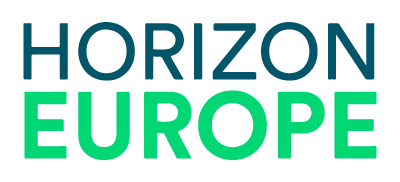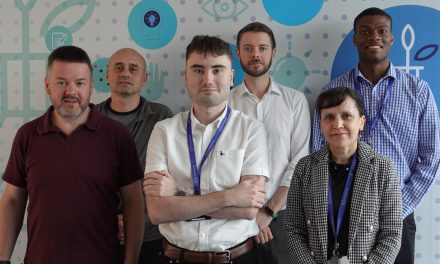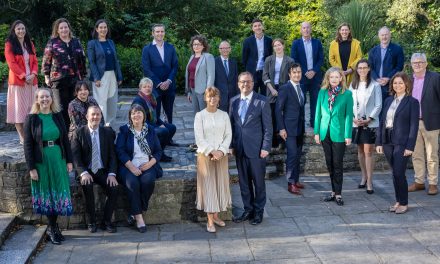In recent years, there has been an exponential increase in the amount of data being produced and processed. That growth is only accelerating as the use of artificial intelligence (AI) gains momentum.
But what that means is that companies, including SMEs, need to be able to quickly and effectively process this huge volume of data emerging at the edge using AI, and deriving value from it. That’s why the EU is keen to fund research initiatives that can help.
One project – BRAINE – developed a brand-new hardware and software platform that will enable SMEs and universities to deploy their own AI infrastructure, without having to rely on cloud platforms or providers.
Meeting the need for edge computing
Rather than going with cloud computing, many larger companies and other organisations are already opting for so-called edge computing, which essentially brings the computation of data closer to the data source. This improves energy efficiency and reduces latency compared to cloud computing.
The BRAINE project was established to develop a modular edge computing platform, integrating big data processing and AI-driven use cases, with both a hardware and software element. The aim was to improve performance, efficiency and ultimately business value.
The €16-million project, which was co-funded by the EU’s ECSEL Joint Undertaking under Horizon 2020, and the National Funding Agencies of the Participating Countries, ran from May 1, 2020 to November 30, 2023 and involved 27 different companies and universities in 14 Participating States.

Sean Ahearne,
Dell Technologies,
BRAINE project lead
The project technical lead was Sean Ahearne, a senior research scientist at Ireland-based Dell Technologies.
Dell’s budget for the project was €1 million, 25% of which was provided by Horizon 2020 funding and 10% by the IDA.
Building systems for AI at the Edge
The BRAINE project saw a number of successful outcomes, Ahearne says. These included the assembly and delivery of the Edge Micro Datacenter (EMDC) to two participating universities, the successful demonstration of the software platform and AI-driven use cases in live demonstrations.
The project also integrated a private 5G network and a Quantum Key Distribution (QKD) optical fibre link running on the EMDCs for edge use cases that need secure communications.
In terms of hardware, one of the biggest successes was the EMDC hardware “with a cooling system that consumes half as much energy as any liquid cooler currently available. It uses a two-phase closed loop thermosyphon design, which is already moving to commercialisation.” Another was the ninefold increase in edge AI performance within a smart city use case for AI video, audio, and traffic analysis, with 20% less energy use.
This was of particular importance as one of the main criteria in the project was sustainability, particularly the improvement of energy efficiency.
Ahearne describes the development of the cooling system as “definitely a big step forward in the state of the art of that technology.”
And overall BRAINE is good news for smaller businesses and organisations, he adds. “In conjunction with the software platform, it makes it a lot easier for companies that aren’t at the scale of the cloud, with much smaller engineering teams and expertise, to build these types of platforms faster, easier, and cheaper. This enables more engineers and researchers in smaller companies and Universities to focus on their AI applications, and not on maintaining infrastructure.”
Fostering communication and collaboration
For Dell, being part of the project fits in very well with their global research strategy, helping them to further innovate and improve Dell products and services based on learnings from the project. It also led to further new projects to continue research topics in line with both the EU’s and Dell’s research agenda. “There are at least three or four EU projects that have spawned out of collaboration and continuation of ideas from the BRAINE project,” Ahearne says.
While there were certainly challenges in dealing with 27 different partners and the impact of COVID-19, things went pretty smoothly. It was important to be “constantly communicating, and fostering a collaborative atmosphere between all the partners as we needed to work together to achieve our goals.”
Indeed, participation in Horizon Europe projects facilitates access to “a vast network of expertise, funding and a collaborative environment that significantly improved Dell’s collective knowledge in technical domains both inside and outside its market,” Ahearne says. It also enables Dell to “keep our finger on the pulse of emerging technologies.”
“We participate in EU programmes to build relationships and be actively involved in future disruptive technologies that may be developing.”
Being part of a consortium that includes universities has other benefits, such as access to a pool of graduate students working on these projects who might subsequently be open to job opportunities at Dell. “Our research team is always looking to hire the best and brightest, and the EU projects gives us visibility on PhD students who are exactly that.”
Persistence is key to securing funding
As for those considering applying for Horizon Europe funding, he admits that it is very competitive. “You have to be used to rejection,” he says. “There are proposals that pass the threshold for quality, but they still don’t end up getting funded because there are just so many good proposals that are submitted.”
That can be disheartening “if you’re just getting started and you’re not seeing much success. But eventually you will get wins and then it really can grow from there, especially once you get your foot in the door. You’ll probably find yourself joining more and more consortiums from the networking you do as part of the projects.”
One place to go for advice on applying is to the Horizon Europe National Support Network team led by Enterprise Ireland. Dell’s contact there, Stephen O’Reilly, is always very helpful, Ahearne said.
Align applications with goals
“Stephen lets us know about the upcoming Horizon Europe calls that might be relevant to Dell. He also lets us know about both universities and the smaller Irish companies that are also looking for the same calls, to see if we can try and merge together and form a larger EU consortium to make a proposal.”
Meanwhile, Ahearne advises companies not to get bogged down in trying to adapt a project to fit a call, but rather seek out one that fits what the company is trying to achieve anyway.
“If you structure your contribution in the proposal as part of research you were planning to do anyway to improve your product or grow your company, then you can align it perfectly with your goals as a company, while also receiving funding from the EU and Enterprise Ireland to perform that research.”
“I’ve certainly seen quite a few small European companies that have seen big growth from the work that they’ve done in these projects.”
If you would like advice about accessing Horizon Europe support or further details, please contact HorizonSupport@enterprise-ireland.com or visit HorizonEurope.ie.





